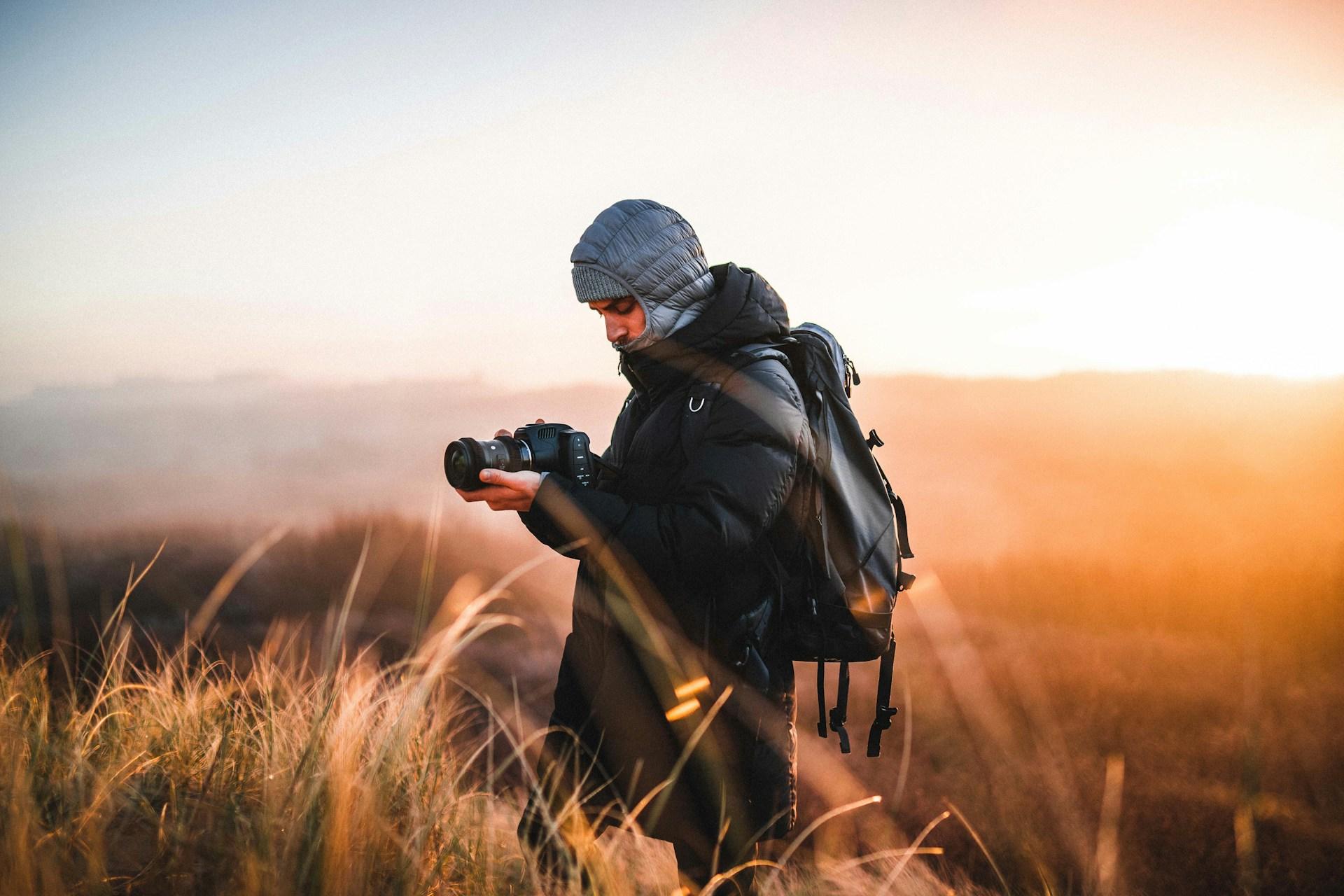Great photography is about depth of feeling, not depth of field.
Peter Adams
Striking scenes define the history of photography, but how should we define 'striking', in relation to images? They're the ones that etch themselves into the minds of people across the globe. They're iconic reproductions of subjects that speak a thousand words. So, our quoted photographer is right in emphasising the emotion, rather than the technical aspects of his art.
The world's most iconic photographs come from a variety of genres and eras. Whether landscape photography or a lucky capture of historical events, the images this article features chronicle the human experience. This chart lists just a handful of the impactful images from the catalog to discover below.
| 🎞 Photo title | 📸 Photographer | 📌 Why it's iconic |
|---|---|---|
| White Dress of Marilyn Monroe | Matty Zimmerman | It represents youth, beauty, and endless possibility. |
| Bliss | Chuck O’Rear | It's one of the most-viewed photographs ever. |
| Milk Drop Coronet | Harold Edgerton | Features anywhere liquid splashes. |
| Guerrillero Heroico | Alberto Korda | It's a popular symbol of resistance. |
| V-J Day in Times Square | Alfred Eisenstaedt | A joyous celebration or a record of assault? |
| First Cellphone Picture | Philippe Khan | This was the start of uploading images! |
| Tank Man | Jeff Widener | It tells a story, we just don't know what it is. |
| Atomic Cloud Rises Over Nagasaki | Charles Levy | It records the second-ever atomic bomb blast. |
| The Vulture and the Little Girl | Kevin Carter | It reflects the cruelty of desperate life. |
| Afghan Girl | Steve McCurry | The ethics of capturing an image against the subject's will. |
| The Terror of War | Nick Ut | It changed military doctrine. |
| The Agony of Omayra Sànchez | Frank Fournier | It portrays the grace and resilience of humanity. |
| Pillars of Creation | Jeff Hester, Paul Scowen | It narrates the act of creation, with divine overtones. |
| The Death of Alan Kurdi | Nilüfer Demir | The tragedy of being 'illegal'. |
| The Falling Man | Richard Drew | Spurred the debate over photographic ethics. |
| The Burning Monk | Malcolm Browne | Helped end religious oppression. |
| The Hooded Man | Ivan Frederick | Highlighted prisoner abuse. |
| On the Moon | Neil Armstrong | Captured humans' first steps on another soil. |
| Emmett Till's Mother | David Jackson | Captured grave social injustice. |
| Albert Einstein | Arthur Sasse | It challenged social standards and notions. |

The Vulture and the Little Girl
This image is controversial. The photographer captured this shot while attached to the United Nation (UN) Operation Lifeline initiative in Sudan.
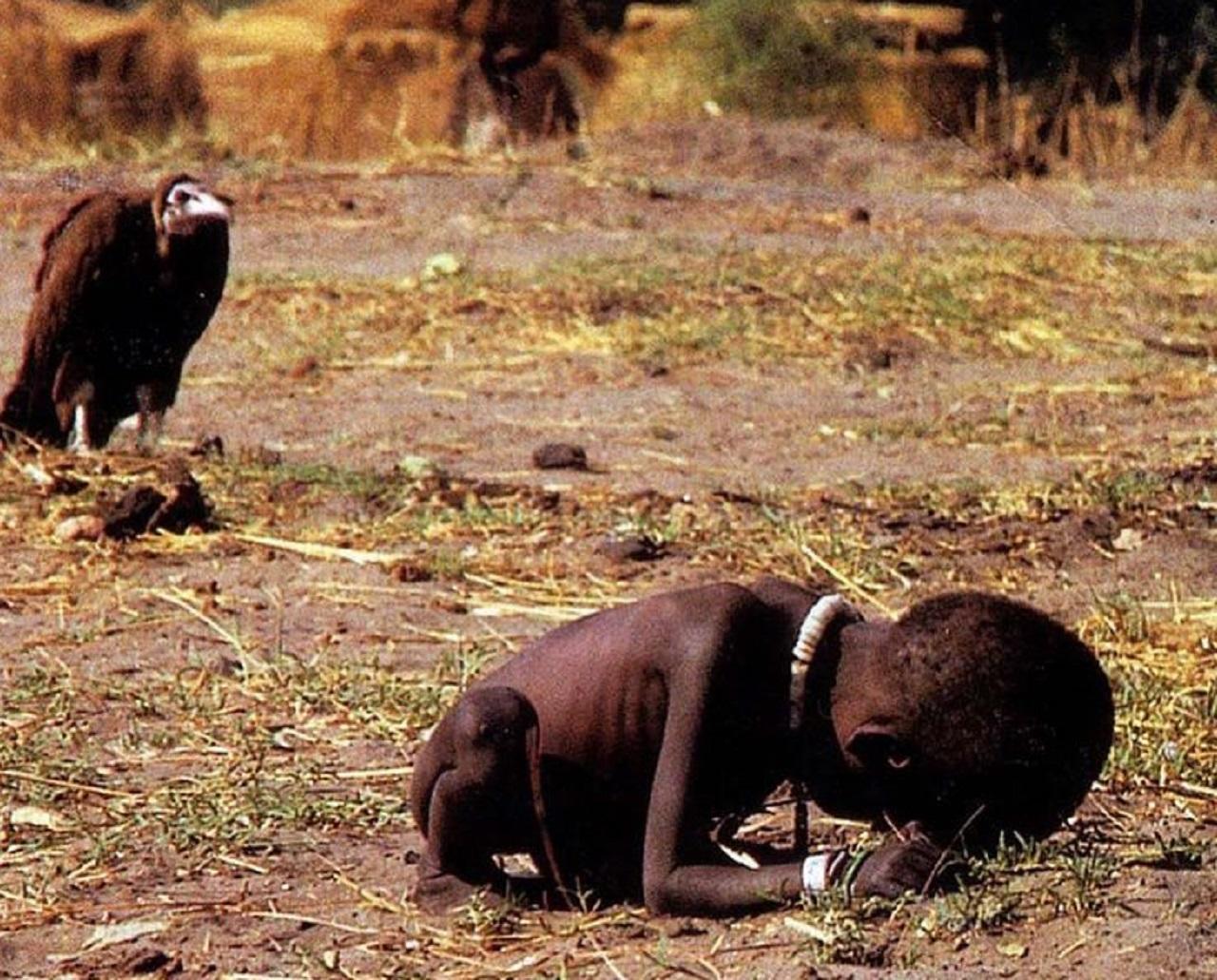
Photographer: Kevin Carter
Publication date: March 1993
Taken: near Ayod, (South) Sudan
Why it matters: this photograph helped change, photojournalists' ethics.
Often, documentary photographers and photojournalists bear witness to the world's most tragic events. This assignment proved overwhelming for Kevin Carter. Particularly after all the accusations that he exploited - and benefited from, the child's plight. He took his own life in July 1994, overcome with sorrow and grief at the horrors he'd witnessed during his short life.
Afghan Girl

Sharbat Gula was twelve years old when this American photographer captured her likeness. Upon publication, commentators described this portrait as "The First World's Third World Mona Lisa". Merely taking her picture was an insult; Sharbat's culture forbids such scrutiny by an unrelated man. Let alone, the whole world.
Likening her to an enigmatic aristocratic (Western) woman compounded the offence. The US president (at the time) using her picture in his war campaign was the ultimate disgrace. No wonder Sarbat Gula was glaring!
Photographer: Steve McCurry
Publication date: June 1985
Taken: Nasir Bagh, Pakistan.
Why it matters: this photograph challenged the 'right' to capture an image without the subject's consent.
Tank Man
Among the most famous historical photos is the standoff between a man with two shopping bags, and a line of tanks.

Photographer: Jeff Widener
Publication date: June 1989
Taken: Beijing, China
Why it matters: this photograph calls into question established narratives.
Using media to establish narratives is a hot topic in photography courses across Australia. For instance, we might question the accusation that students died by the thousands during that uprising, from intentional state violence. If that were fact, why would a line of tanks baulk at harming one man?
To this day, no one is certain what the man-tank standoff was about. Nor do we know who the two people were who helped 'Tank Man' melt into the crowd: police, or concerned citizens? Beijing is mum on the whole incident. This iconic photograph reminds us how easily one might spin a story to fit their objectives.
V-J Day in Times Square
Initially - and, for many years afterwards, this photograph depicted a celebration of victory. However, in 2010, long before the Me Too movement, people started calling it out. They pointed to the nurse's contorted body, and the headlock the sailor had on her, as well as onlookers' bemused expressions.
To be sure, this is one of the famous images to mark the war's end. However, it's also a social commentary. Both in the crudeness and near-violence of the assault, and the smiling onlookers who do nothing to stop it.
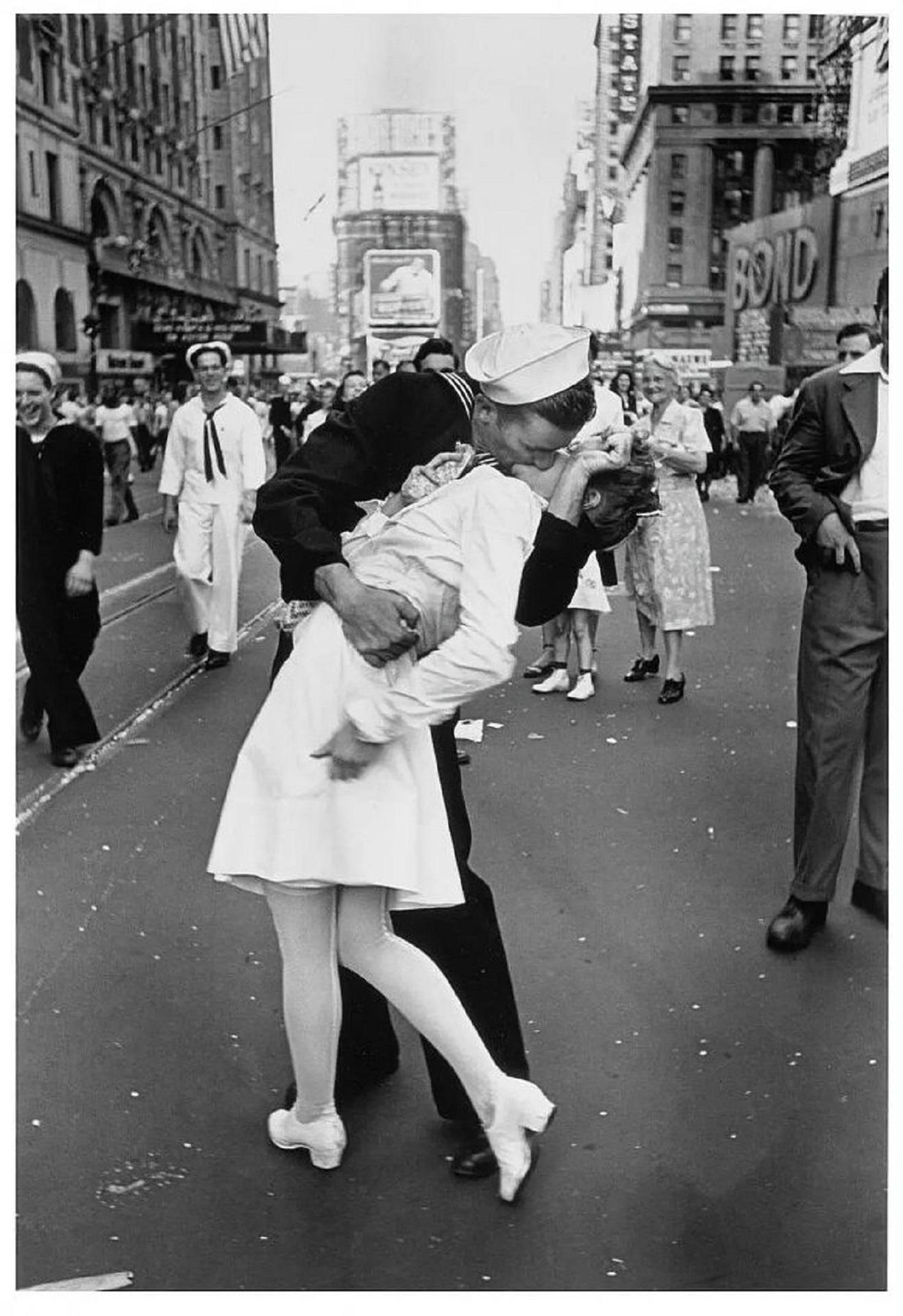
Photographer: Alfred Eisenstaedt
Publication date: August 1945
Taken: New York City
Why it matters: this photograph is a part of the historical record of normalised sexual assault.
Notably, the photographer snapped four pictures; one of them with the nurse striking the sailor with her fist. That frame never saw the light of day.
Atomic Cloud Rises Over Nagasaki
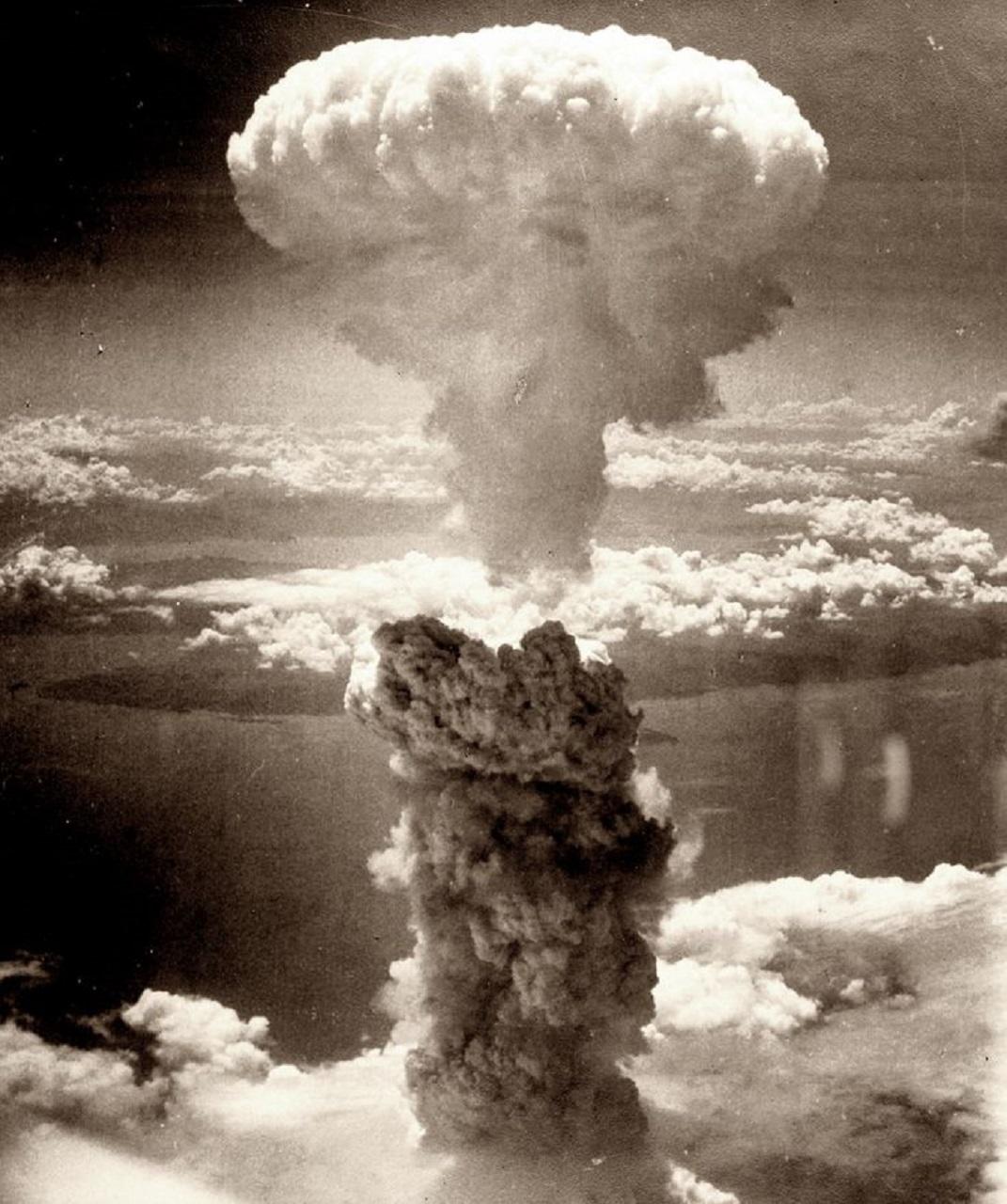
Three days before the Nagasaki blast, the Enola Gay overflew Hiroshima and dropped its Little Boy, levelling the city and everyone in it. Japan was already negotiating its surrender when US forces dropped its second bomb on this population centre.
Most agree that the twin bombings served to put the world on notice that a new, devastating source of power had been harnessed.
Photographer: Charles Levy
Publication date: August 1945
Taken: over Nagasaki, Japan
Why it matters: this photograph made visible the tremendous power of atomic release.
The Terror of War
Though online photography courses can help train you to capture terrible sights such as this, you must often steel yourself to do so.

Photographer: Nick Ut
Publication date: June 1972
Taken: near Trảng Bàng, Vietnam
Why it matters: this photograph changed military doctrine and international law.
The Vietnam War (1955-1975) was - and remains, controversial. Even transmitting this image for publication was trouble, because the central figure is nude.
After capturing the image, Nick Ut set his camera aside to help her. These children's terror led to the napalm ban, and the further tightening of incendiary weapons' use.
The Agony of Omayra Sànchez
This image doesn't feature on many lists of famous photos, but it should. The story behind it is nothing but tragic.
Photographer: Frank Fournier
Publication date: November 1985
Taken: Armero, Tolina (Columbia)
Why it matters: this photograph compelled Columbia for create emergency action plans.
Emergency services were unable to rescue Omayra in time, stuck as she was, beneath mud and debris. This 13-year-old girl expired after three days, still trapped.
Pillars of Creation
In the 1990s, hope in space exploration soared when the Hubble telescope began transmitting images. This capture, titled the Pillars of Creation, represents a 'star factory'. Within these gaseous pillars, new stars are born, even as light from new stars nearby erodes their form.
National Geographic magazine hailed this image as one of the most important of the decade.

For a time, this image graced everything from tote bags to coffee mugs, and tee-shirts to textbooks. NASA revisited and recaptured the image 25 years later, as a tribute to the original photograph.
Photographers: Jeff Hester, Paul Scowen
Publication date: April 1995
Taken: in the Serpens Constellation, via Arizona State University
Why it matters: It expresses the awe of creation and the beauty and power of space.
The Death of Alan Kurdi
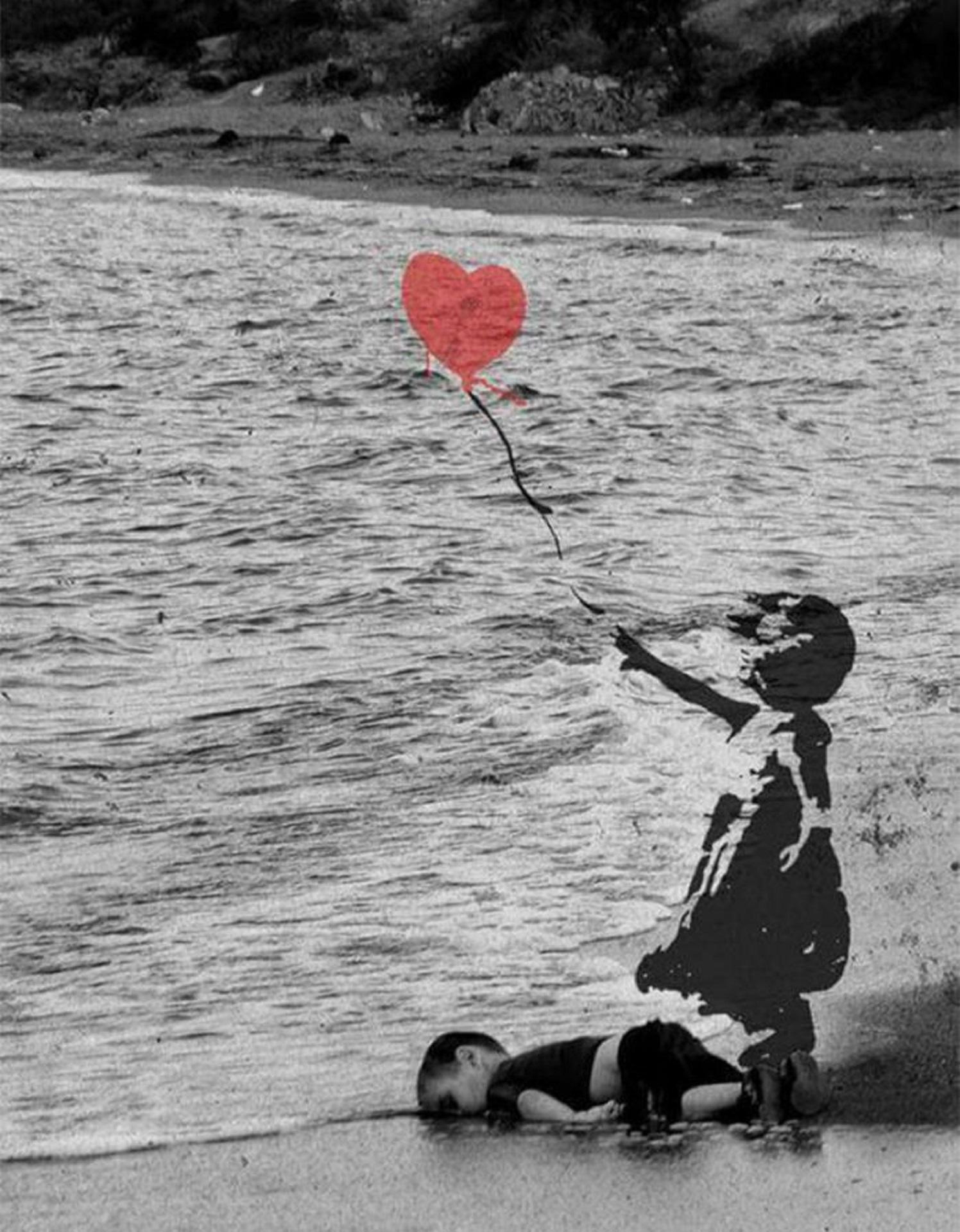
The original image of this child, dead on a beach, stopped the world’s news in September 2015. Artists have recreated it in many forms, including this one.
Photographer Nilüfer Demir explained: “By photographing [them], I simply wanted to capture the trauma experienced by these people”. The global reaction was swift, but mixed. Those favouring immigration donated heavily, but those against accused the boy's father of monetising his son's death.
Photographer: Nilüfer Demir
Publication date: September 2015
Taken: near Bodrum, Türkiye
Why it matters: this photograph woke the world up to the depth of immigrants' plight.

Guerrillero Heroico
Captured moments that become iconic photos are often of low-key events. Snapping a stoic expression at a funeral is an example of such. But what is the story behind this portrait?
The photographer snapped this pic in 1960, at a memorial service for the victims of the explosion at La Coubre. Today, Indeed, Che Guavara's likeness continues to inspire resistance.
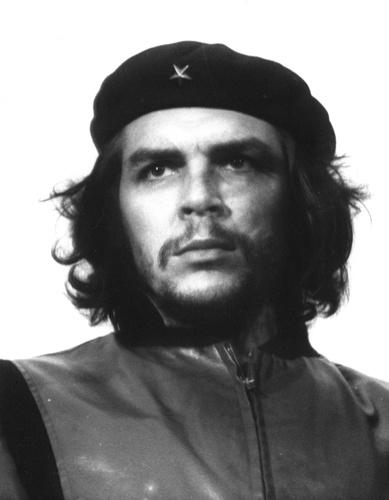
Photographer: Alberto Korda
Publication date: March 1960
Taken: Havana, Cuba
Why it matters: this photograph became - and remains, an international symbol of resistance.
The Falling Man

Camera operators pick up photography tips for all styles of photography throughout their careers. Learning how to distance oneself from the scene is one such suggestion, and this image proves.
The photographer snapped this man's fall as the September 2001 attack was underway. There's no debate over the image's power, only over whether it should have been published. That terrible occasion offered much to photograph. Many contended that publishing someone's desperate, final, and very personal decision was distasteful in the extreme.
Photographer: Richard Drew
Publication date: September 2001
Taken: New York City
Why it matters: this photograph revived the debate over the ethics and purpose of publishing such dramatic, intimate photos.
Bliss - Chuck O’Rear
Bucolic as it is, this 'accidental' snapshot is one of the most famous photos in history. Or, at least, one of the most viewed.
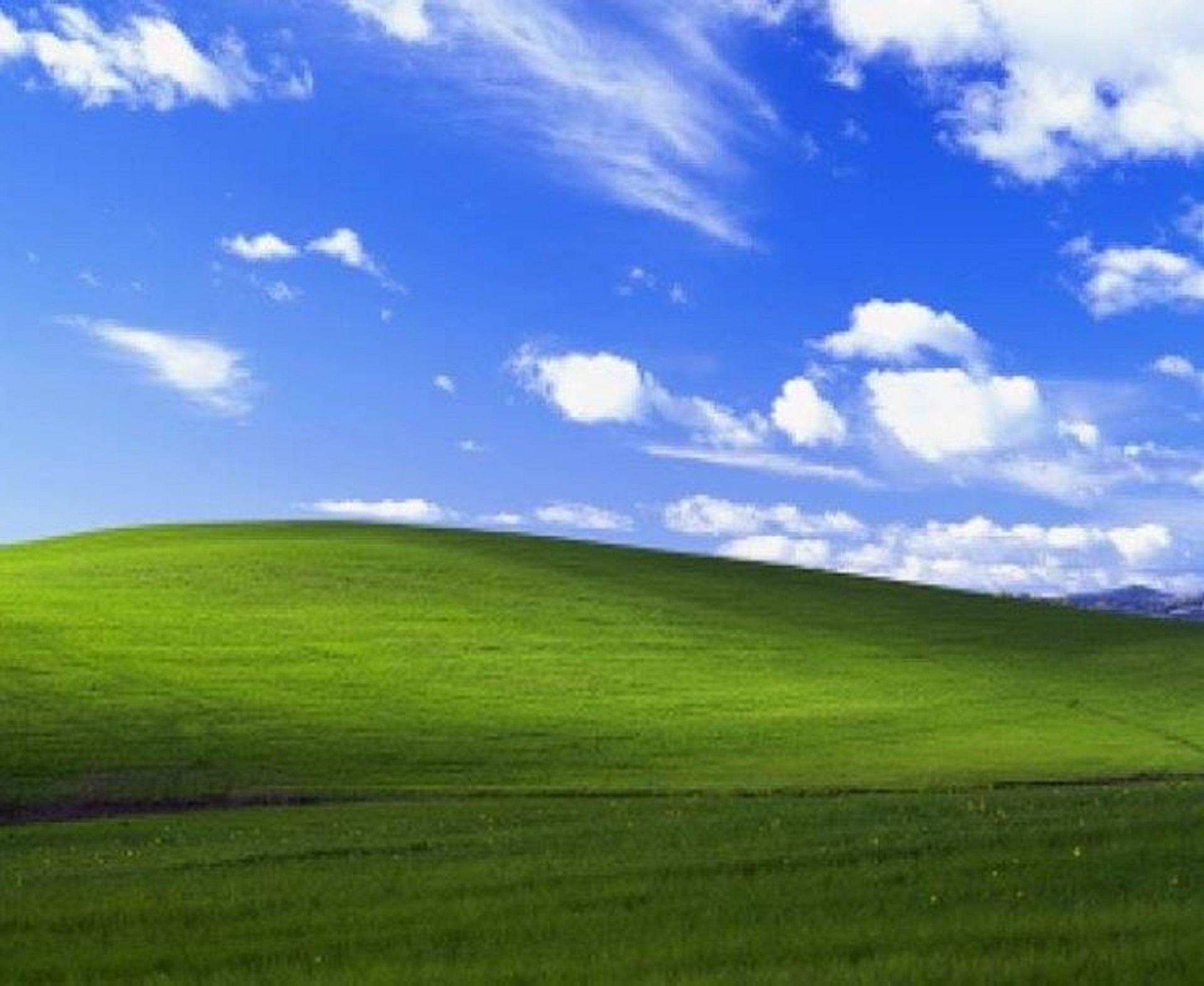
Photographer: Chuck O’Rear
Publication date: January 1995
Taken: Napa County in California
Why it matters: this photograph adorned every Microsoft XP computer screen.
Bliss rose to fame as the default desktop background for Windows XP. Several of O’Rear’s other works have also been used as backgrounds.
The Burning Monk
Setting oneself on fire is the ultimate protest. Capturing the act on film makes the protesters' self-sacrifice unforgettable.
A Buddhist monk, Thich Quang Duc, self-immolated on the streets of Saigon. He did so in protest of how Buddhist monks were treated during Ngo Dinh Diem’s regime. Malcolm Browne was the only Western journalist at the scene in 1963. He captured a series of photos that changed the world, this one included.

Photographer: Malcolm Browne
Publication date: June 1963
Taken: Saigon, Vietnam
Why it matters: this photograph forced concessions from a dominant religious faction.
First Cellphone Picture
Your photography courses Perth will likely include digital photography. Technology has come so far since this picture!
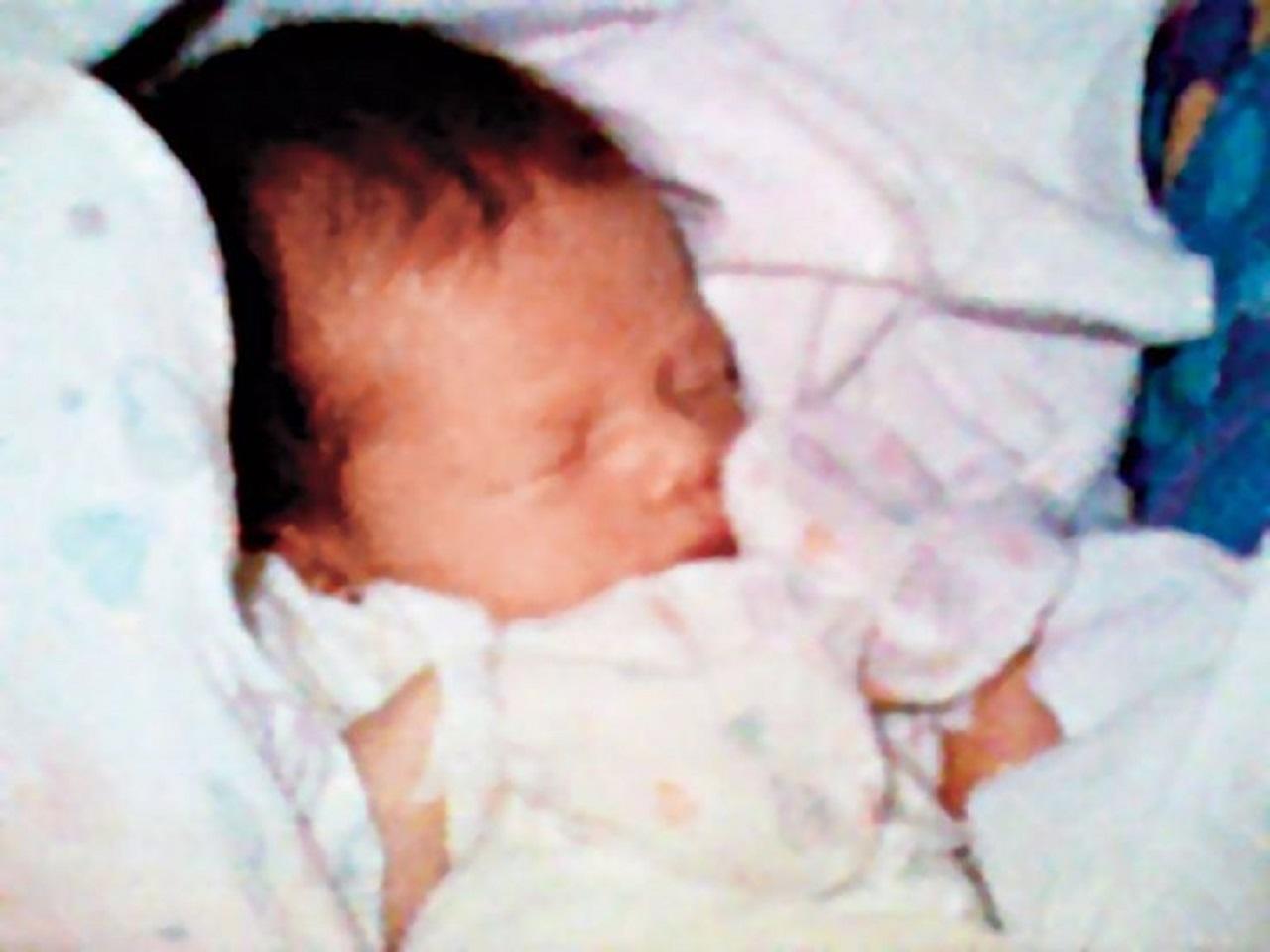
Photographer: Philippe Khan
Publication date: June 1997
Taken: Santa Cruz, California
Why it matters: this photograph was the world's first instant-share image.
This engineer had long dreamt of digital image transfers. His daughter's imminent birth prompted him to cobble a system together to make that dream come true. Philippe Khan continues his work in the tech sector. Photography doesn't feature on his list of interests.
The Hooded Man
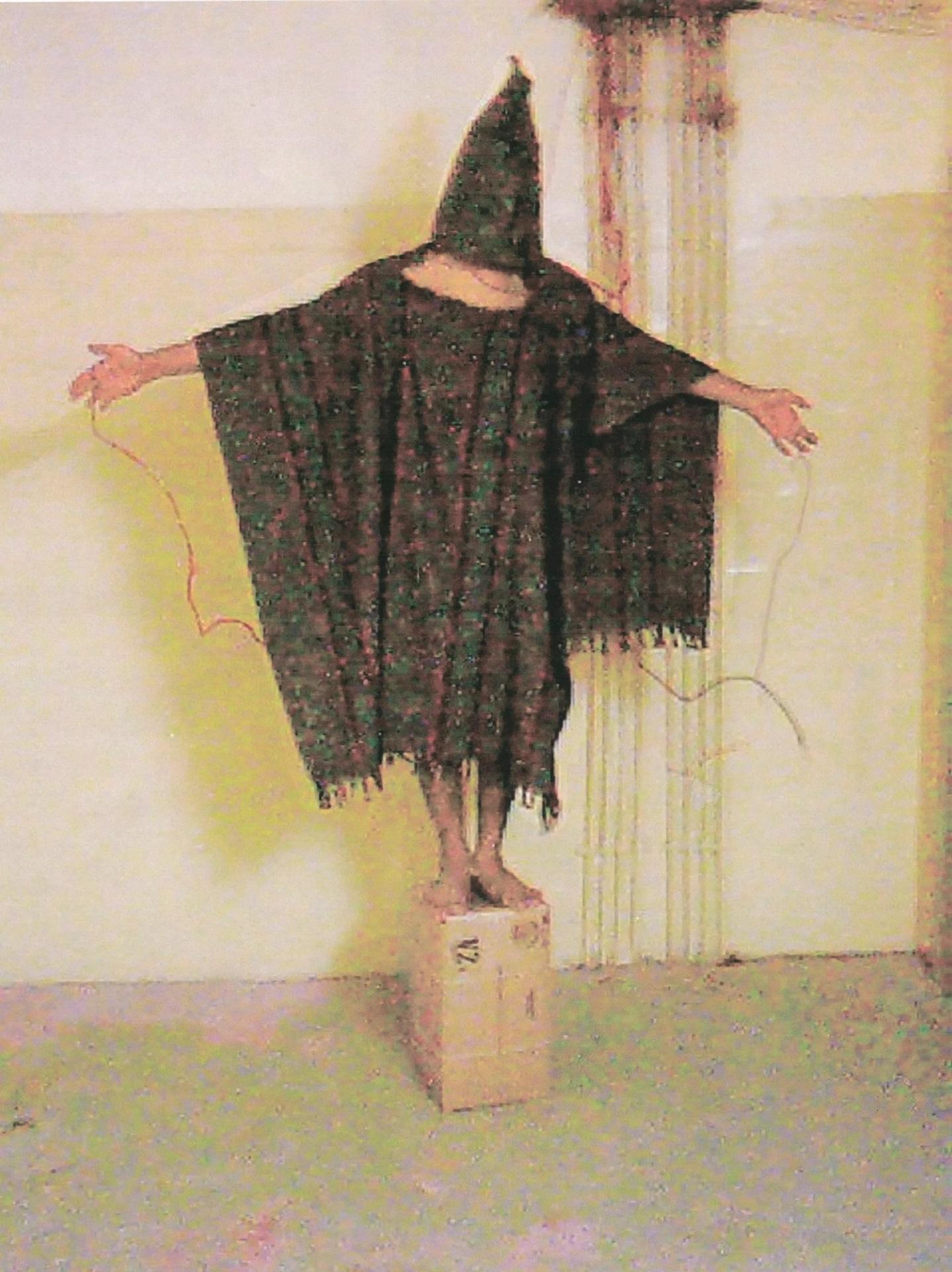
This image is frightening for its anonymity, and its implied cruelty.
We hold this photo as "the defining image of the scandal" that was the Abu Ghraib prison complex. The person who captured this image received a prison sentence for his role in the torture. He was also relieved of his military obligations, and stripped of all honours and benefits.
Photographer: Ivan Frederick
Publication date: April 2004
Taken: Baghdad, Iraq
Why it matters: this photograph shed light on prisoner abuse during the war on terror.
On the Moon
One small step for a man, a giant leap for mankind.
Neil Armstrong

Photographer: Neil Armstrong
Publication date: July 1969
Taken: on the moon
Why it matters: this photograph recorded humans' first steps on soil other than Earth's.
The 1969 moon landing captivated audiences and fired imaginations worldwide. With it, some parts of the world declared the 'space race' won, while others were just getting started.
Milk Drop Coronet
We've seen more than one article on food photography that features this image. Have you?
Again, we have a case of an engineer making photographic history in pursuit of his science. Mr Edgerton's fascination with 'drop coronas' lies in the physics behind the act - breaking surface tension, and such. So, he invented a way to study the physical world with photographic evidence.

Photographer: Harold Edgerton
Publication date: January 1957
Taken: Massachusetts Institute of Technology (MIT)
Why it matters: this photograph is one of the first high-speed captures.
Emmett Till's Mother

Bringing injustice to light often comes at a high personal cost.
Store owners lynched Emmett Till for talking to a clerk. His mother insisted that his remains must return to Chicago, and his coffin must remain open so everyone could see racism's results. This photograph galvanised the Civil Rights movement, with Till becoming one of its icons.
Photographer: David Jackson
Publication date: September 1955
Taken: Chicago, Illinois
Why it matters: this photograph became the symbol of injustice in the US.
Albert Einstein
Initially, Mr Sasse's editors squirmed at publishing this inane image of the venerated physicist. Thank goodness they did! Records show that Mr Einstein ordered several copies for himself; clearly, he didn't mind looking like that.
To this day, this 'nutty professor' Einstein take remains popular. This photograph proves that geniuses aren't always serious.

Photographer: Arthur Sasse
Publication date: March 1951
Taken: New York City
Why it matters: this photograph challenged notions of decorum and appropriateness.
White Dress of Marilyn Monroe
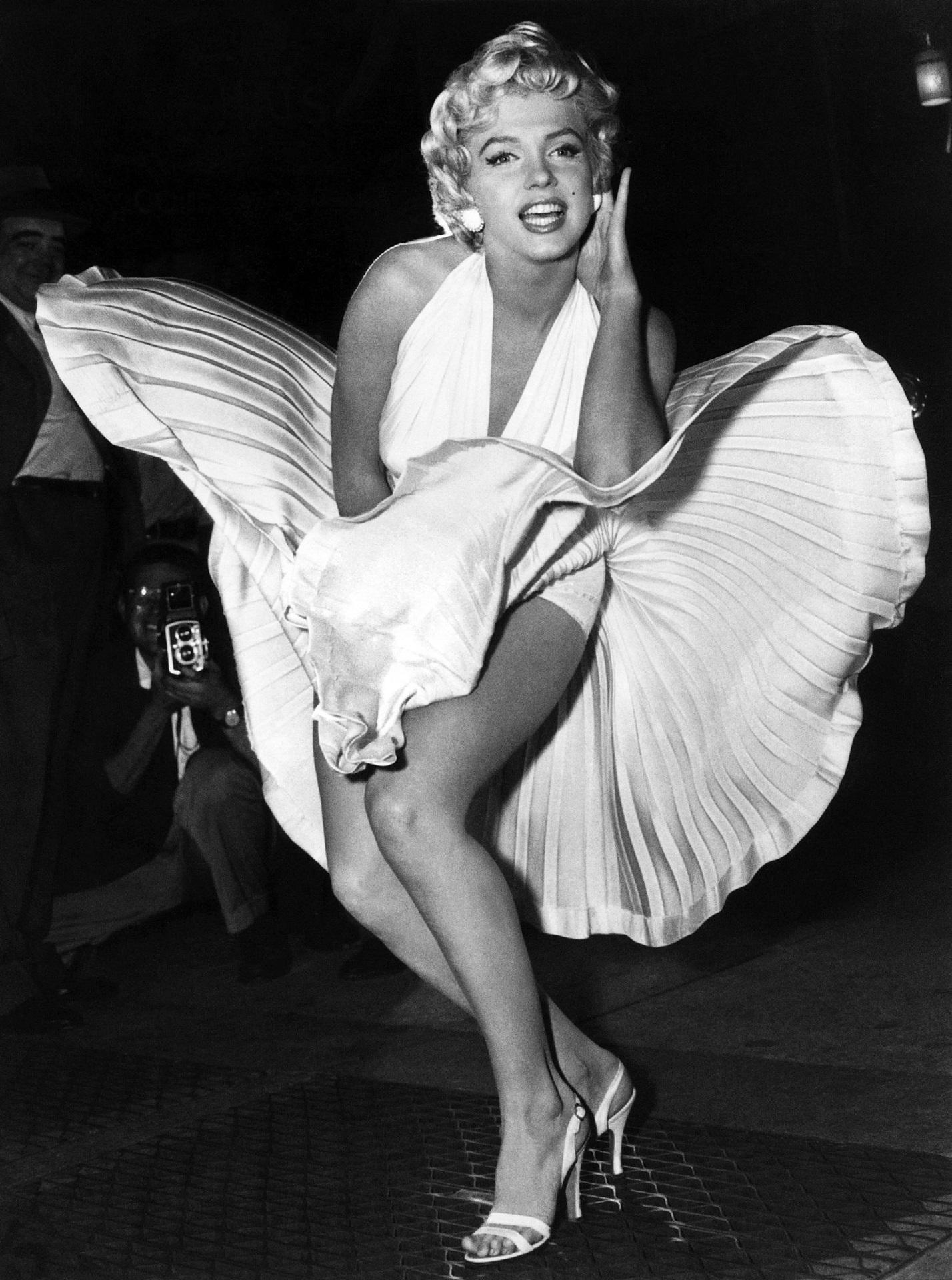
We end our famous photography round-up with one of the most iconic images of all time. In any discussion about the art of contemporary photography, this image invariably comes up.
Many artists have copied Ms Monroe's famous scene from the film, The Seven-Year Itch. In fact, her skirt, flying on an updraft, copies from a 1901 short film. Arguably, her billowy, gauzy leg exposure is far more alluring.
Photographer: Matty Zimmerman
Publication date: September 1954
Taken: New York City
Why it matters: this photograph symbolises youth, sex, and the infinite possibilities life offers.

